Blastoff! How to See a Rocket Launch In Person This Year
How to Catch a Rocket Launch
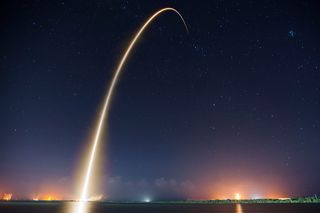
It's not just for the pros: With a little planning and flexibility, anybody can go watch a rocket blast off.
This guide goes through each of the three U.S. sites that have rocket launches this summer: Kennedy Space Center/Cape Canaveral in Florida, Wallops Flight Facility in Virginia and Vandenberg Air Force Base in California. It tells you where to go, what to expect and what launches to watch for this summer.
Space.com talked with launch photographer Ben Cooper for the inside scoop on each of the three sites, and also talked with Andrea Farmer from Kennedy Space Center, Keith Koehler from Wallops and Jay Pritchard from Vandenberg. Each site has its own best places to view: Some offer official tours and launch viewing, and others are best experienced from a nearby park or roadside. [Amazing Rocket Launch Photos]
When planning to visit a rocket launch, it's important to remember that dates are rarely finalized until a few weeks to a few months before each launch. And planned launches can be called off or delayed due to weather or technical issues, even down to 1 second before launch. So it's important to make flexible plans and to prepare to stay for a few days if you're determined to catch the launch despite delays. The areas open to you may depend on if you're watching a daytime or nighttime launch.
Check Space.com's calendar and Spaceflight Now's launch schedule for up-to-date information on when launches will happen, and keep an eye on NASA's and the rocket company's Twitter feeds for additional updates. Online communities discuss the best times and places to view launches, so be sure to look for the most up-to-date information and advice on those sites as well when you're interested in a particular launch site or rocket.
And remember to actually watch the launch once you're there, each of the experts told Space.com. Don't be distracted by photography, especially for your first launch viewing.
As Vandenberg's Pritchard put it, "If you're going to make the effort to come watch a launch, come and be a part of the environment to do that, and watch the launch. There are million-dollar camera systems that are taking engineering photos to do this — get those photos. They will be posted almost immediately."
"Don't miss the experience because you're trying to find it in the little digital image on your phone or your camera," he added. "Go and enjoy the show — and stand back and wait for the rumble."
(Launch schedules updated April 17, 2019)
NEXT: See a launch at Kennedy Space Center/Cape Canaveral Air Force Station
Kennedy Space Center/Cape Canaveral Air Force Station
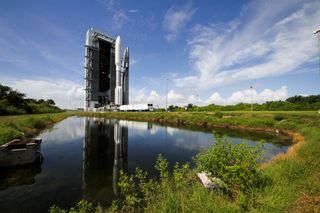
NASA's Kennedy Space Center and the Cape Canaveral Air Force Station, located about an hour away from Orlando, Florida, are technically two separate launch sites in the same location. Combined, the two host several rocket launches throughout the year using SpaceX's Falcon 9 and Falcon Heavy rockets and United Launch Alliance's (ULA) Atlas V and Delta 4 rockets. The area is called America's Space Coast for good reason: it played host to all five of the space shuttles and launched the Saturn V rockets that brought Apollo astronauts to the moon. (NASA has recently signed over Apollo 11's historic launch pad to SpaceX for that company's upcoming crewed launches, and they've already had their first uncrewed launches from that pad.)
Kennedy Space Center offers official viewing for many launches at both sites, which are announced via the center's email newsletter and eventually appear on the center's website as well. Depending on the timing, tickets to the launches are either included in the price of a Kennedy Space Center tour or must be bought separately. The launch-viewing trips always leave from the center's visitor complex and are generally based at the Apollo Saturn V Center or the LC-39 Observation Gantry (which is located at Kennedy Space Center's launch site).
Tours from the visitor's complex will also often bring visitors near the launch pad ahead of time to get a close look at the rocket. [Photos: The Kennedy Space Center, NASA's Historic Spaceport]
"Depending on the time of day and the launch, it's always different," Cooper said. "But they've been selling tickets to the LC-39 [Observation] Gantry, which is one of the bus stops on the tour, and that generally allows them to get closer than any other location at this point. Especially for an Atlas launch, it's closer than even the media gets."
It's also possible to watch the launches from the visitor's complex itself, which is even closer than many of the viewing sites, but trees block out the view of the launch pad. Occasionally, the center will sell tickets to view the launch from the NASA Causeway, Cooper said. That is also a very close view (and is where much of the media watches the launch). All of the center's sites offer live commentary and audio from mission control.
One major caveat: As mentioned earlier, launches will sometimes be delayed or rescheduled to occur on different days, and visitors who go out to the site will have to buy new tickets to go out another time, even if the launch doesn't happen.
"We've got the closest viewing locations on the Space Coast to see, to hear and to feel these rocket launches as they thunder from the launch pads," Farmer, Kennedy Space Center's public relations manager, told Space.com. "It's a truly amazing experience, and one that I recommend everyone try and do at least once in their lifetime."
Viewers can also watch launches from outside locations, Cooper said. The best for Atlas launches is Playalinda Beach, located just a few miles away from the site and open only in the daytime. Other than the ticketed locations and that beach, the next best place is Port Canaveral, right near where the cruise ships are, he said, on Route 401. It's a limited viewing area, and only a certain number of cars can park before it fills up, so it's necessary to get there early. It's the best nonticketed location for night launches.
After that, there are areas on Route 528 where it's possible to pull over and watch the launch, and you can go to further away beaches. But the above are the closest public spots you can find.
Every launch is different, Cooper said: Check the timing details and the launchpad location each time, but it will always vary based on the rocket and the time of day (and whether Kennedy Space Center is offering a place to watch).
NEXT: Upcoming Cape Canaveral Launches
Launches: Kennedy Space Center/Cape Canaveral Air Force Station
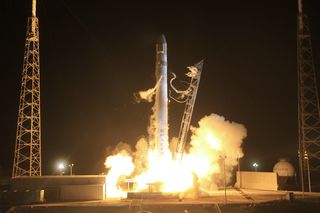
Launches are frequently rescheduled, and concrete dates are sometimes not picked until shortly before the launch. So remember to check Spaceflight Now and our calendar for the most up-to-date information. Launch dates are subject to change!
April
April 26: A SpaceX Falcon 9 rocket will launch the Dragon CRS-17 cargo mission to the International Space Station from Cape Canaveral Air Force Station in Florida, at 5:55 a.m. EDT (0955 GMT).
Also scheduled to launch in April: A Rocket Lab Electron rocket will launch three small satellites for the U.S. Air Force’s Rapid Agile Launch Initiative (RALI). It will lift off from the Mahia Peninsula in New Zealand.
May
May 27: SpaceX will use a Falcon 9 rocket to launch the Amos 17 communications satellite from Cape Canaveral Air Force Station in Florida.
June
June 27: A United Launch Alliance Atlas V rocket will launch the fifth Advanced Extremely High Frequency (AEHF) satellite for the U.S. military.
Also scheduled to launch in June: A SpaceX Falcon Heavy rocket will launch the U.S. Air Force's Space Test Program-2 mission from Kennedy Space Center in Florida.
July
July 8: A SpaceX Falcon 9 rocket will launch the Dragon cargo spacecraft (CRS-18) on a mission to the International Space Station from Cape Canaveral Air Force Station in Florida.
July 25: Crew Dragon Demo 2: SpaceX's Crew Dragon spacecraft is scheduled to take its first crewed test flight to the International Space Station with NASA astronauts Doug Hurley and Bob Behnken on board. This will be the Crew Dragon's first test flight with astronauts on board following the uncrewed Demo-1 mission in March.
July 25: A United Launch Alliance Delta 4 rocket will launch the second GPS 3 satellite for the U.S. Air Force's Global Positioning System from Cape Canaveral Air Force Station in Florida.
August
Aug. 17: The Boeing CST-100 Starliner may launch on its first uncrewed mission, called the Orbital Flight Test (OFT), to the International Space Station. It will lift off from Cape Canaveral Air Force Station in Florida on a United Launch Alliance Atlas V rocket. The mission was delayed from April to no earlier than August.
Scheduled for launch in October: A SpaceX Falcon 9 rocket will launch the third GPS 3 satellite for the U.S. Air Force's Global Positioning System from Cape Canaveral Air Force Station in Florida.
Scheduled for launch in November: Boeing's CST-100 Starliner will take its first Crew Test Flight to the International Space Station. It will lift off on a United Launch Alliance Atlas V rocket with Boeing astronaut Chris Ferguson, NASA astronaut Eric Boe and NASA astronaut Nicole Mann.
NEXT: See a launch at Wallops Island
Wallops Flight Facility

On the eastern shore of Virginia, Wallops Flight Facility is one of the world's oldest launch sites, NASA said, established in 1945. The facility hosts six launch pads and currently acts as the launch site for Orbital ATK's Antares rocket. You can also see launches of smaller, experiment-bearing sounding rockets.
"Our launches here at Wallops are open, whether it be a sounding rocket or something like an Antares, the larger vehicles, and all those can be seen from the visitor's center," said Koehler, a Wallops communications specialist. "You can listen to the audio going on in the control room. You can watch the screens that are showing the cameras on the launch pad, and then folks can go right down towards the edge of what we call the marsh […] and you'll be able to see the rocket take off from there. There are no tickets required. It's first-come, first-served," he told Space.com.
Wallops Visitor Center offers a map of the viewing-site location and that of two other places from which to watch, the Chincoteague Wildlife Refuge and Toms Cove Visitor Center. The map details when the facilities are open and where vehicles are allowed. For big launches, the site can fill up quickly, so you need to get there 2-3 hours ahead of time; for sounding rockets launching outside of the visitor center's normal hours, the center will open only a half hour beforehand. Only a few hundred people watch those launches from the center. [NASA's Wallops Flight Facility: Rocket Launches from Virginia (Photos)]
Last summer, the Antares rocket returned to flight after an explosion in October 2014, and you can expect to see a few Antares launches this summer as well.
"Antares launches do fill up the entire surrounding area," Koehler warned. "It's going to be a crowd."
Most of the area around the facility is private, Cooper said — there are houses just a mile and a half (2.4 kilometers) away from the launch pad. He suggested a spot just 1.5 miles away, closer than the Wallops Visitor Center, on Arbuckle Neck Road, but warned that it can fill up.
"It's quite a show, but it's also a limited viewing area, so you want to get there early if you want to try for that," Cooper said. "And again, there's private property all around, so you want to be careful about that."
A Virginia tourism site lists directions to this location and other potential viewing spots along with the distances away.
Sounding rockets go up very quickly, and you need to be looking in the right direction at the right time to spot the launch. To help with that, Wallops' phone app points the direction to the launch pad (the app can be downloaded at the bottom of the launch web page).
Antares launches are much louder and slower — and at night, the ascent of these rockets can be spotted from the whole Washington, D.C., area.
NEXT: Upcoming Wallops launches
Launches: Wallops Flight Facility

Launches are frequently rescheduled, and concrete dates are sometimes not picked until shortly before the launch. So remember to check Spaceflight Now and our calendar for the most up-to-date information. Launch dates are subject to change!
April 17: A Northrop Grumman Antares rocket will launch a Cygnus cargo spacecraft to the International Space Station from Wallops Island, Virginia, at 4:46 p.m. EDT (2046 GMT).
Oct. 19: Northrop Grumman will launch the Cygnus NG-12 cargo mission to the International Space Station. It will lift off from Wallops Island, Virginia on an Antares rocket.
Late 2019: A Minotaur 1 rocket from U.S. Air Force and Northrop Grumman will launch a classified spy satellite for the U.S. National Reconnaissance Office
Sounding rocket launches are announced on the visitor center site as they come up rather than on a comprehensive list, so check that site if you'll be in the area!
NEXT: See a launch at Vandenberg Air Force Base
Vandenberg Air Force Base
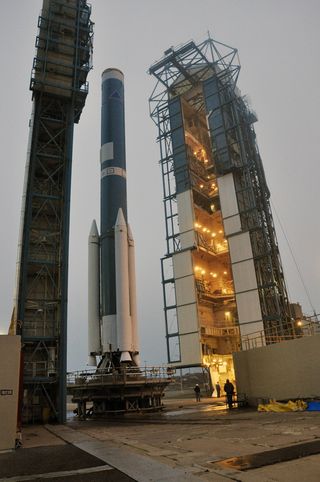
Vandenberg Air Force Base, in central California northwest of Los Angeles, is a 99,600-acre facility that launches rockets from both its North and South Base. The location allows the base to both launch test missiles over the Pacific Ocean and launch satellites into polar orbit — Discoverer I, the world's first polar satellite, launched from the base in 1959. It hosts launches of commercial rockets, including SpaceX's Falcon 9, ULA's Delta and Atlas V, and Orbital ATK's Minotaur, and also hosts test launches of unarmed Minuteman III intercontinental ballistic missiles.
Base access isn't necessary to see Vandenberg's many launches, in fact, "probably the best places to watch launches at Vandenberg are actually off base," said Pritchard, the director of the Vandenberg Space and Missile Technology Center. Rockets launching from the north and south sides of the base will head in different directions, which will affect viewing, he told Space.com.
The officially recommended public viewing site is near Vandenberg's main gate, off of Corral Road. Vandenberg's website offers more specific directions. Pritchard also recommended the park at Providence Landing and a mountain road called Harris Grade (which is good for south Vandenberg launches). That site has the added bonus of being above the area's sometimes-dense fog. [Launch Photos: Huge Delta 4-Heavy Rocket Soars with Secret NROL-65 Satellite]
Viewers in locations south of Vandenberg, like Santa Barbara, are able to see polar-orbit-bound rockets streaking overhead, Pritchard added.
The Vandenberg area is tricky, Cooper said, because of the mountains and frequent fog.
"There's really no place you can go where you can see the pads, because it's a mountainous area," Cooper said. "The closest you can get to is Atlas — it's even closer than at the Cape, because they keep the road open that runs right outside the gate…and the rocket pops up from behind the mountains. It's the same thing with Falcon, Delta — wherever you go it will pop up behind the mountains."
The road he recommended, W Ocean Avenue, closes at a certain point as it approaches the base, and viewers can pull off to the side to watch. It's also possible to watch from relatively far-away Santa Ynez Peak, and a county park location called Jalama Beach, when the park is open. (Because it's a county park, you have to pay to get in or rent a campsite.)
Public areas within sight of the launch can fill up, and Pritchard recommended arriving at least an hour beforehand, especially for locations where you'll have to park and walk further. He said that social media sites like Reddit and Twitter will often have discussions where people share news about the launch and potential sites, and so they can be a valuable resource to plan where to go and when to get there (and to find out when a launch will occur). Be sure to dress warmly, in layers, and bring a camp chair — and prepare to meet the other rocket enthusiasts who congregate to watch the base's launches.
And again, he warned, be sure to check online resources for updates on the launch times and schedules, which can frequently change. "There are a lot of variables: there are mechanical variables, there are weather variables, and all of those things will change," he said. "Our primary mission is to make sure that we can do this safely, and to make sure it's safe for the community, and we have assured, safe access to space. People get the chance to come out and see this, but understanding that first and foremost we've got to make sure that we can get there, and all the resources are protected still."
NEXT: Upcoming Vandenberg Launches
Summer Launches: Vandenberg Air Force Base
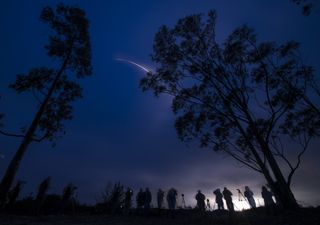
Launches are frequently rescheduled, and concrete dates are sometimes not picked until shortly before the launch, so remember to check Spaceflight Now and our calendar for the most up-to-date information. Launch dates are subject to change!
May 16: A SpaceX Falcon 9 rocket will launch the Canadian Space Agency's Radarsat Constellation Mission from Vandenberg Air Force Base in California.
The base's other rocket launches and missile tests are generally announced just three to five days in advance, and can be found by calling the base at 805-606-8263.
NEXT: Map and other options
Launch Locations & Map
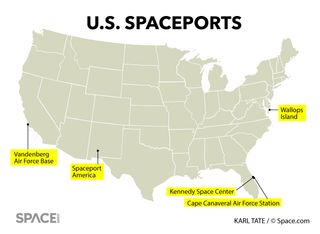
If you're planning a spaceport trip or just happen to be passing by these locations, be sure to check launch schedules to see if you'll have the chance to witness a launch. Don't plan a trip based on a firm launch date too far in advance, though — as we've already mentioned, launches can be rescheduled for many reasons. And prepare to potentially wait for a few days; launches can be delayed or pushed back based on weather and mechanical concerns.
Be sure to dress for the weather, including taking sunglasses and sunscreen for sunnier areas; also bring something to sit on and enough snacks and supplies to last you through a few hours' wait. Different launch-viewing sites have different conditions — for instance, at Cape Canaveral's Saturn V Center, you can stay inside until just before the launch, but on a public beach or roadside there may not be anywhere to wait. For launches that are particularly close by, some people like to bring earplugs.
But if you plan it right, check the schedule and social media and make it for a launch going off, it can be an extraordinary experience, Farmer of Kennedy Space Center said. "You hear that 3…2…1 and you see the engines ignite and smoke from the launch pad, and the rocket begins to lift off. And then, because sound travels more slowly, you eventually start hearing the sounds of the engines, and it just continues to build as you watch the rocket climb into the sky. It's a one-of-a-kind experience."
If you're planning a staycation instead, major launches are webcast live via NASA or the individual rocket company, and streamed here on Space.com.
And if you do go see a rocket launch and snap an awesome photo, let us know. You can send images and comments on your launch experience in to Space.com in to managing editor Tariq Malik at: spacephotos@space.com.
Good luck!
Email Sarah Lewin at slewin@space.com or follow her @SarahExplains. Follow us @Spacedotcom, Facebook and Google+.
Join our Space Forums to keep talking space on the latest missions, night sky and more! And if you have a news tip, correction or comment, let us know at: community@space.com.
Get the Space.com Newsletter
Breaking space news, the latest updates on rocket launches, skywatching events and more!

Sarah Lewin started writing for Space.com in June of 2015 as a Staff Writer and became Associate Editor in 2019 . Her work has been featured by Scientific American, IEEE Spectrum, Quanta Magazine, Wired, The Scientist, Science Friday and WGBH's Inside NOVA. Sarah has an MA from NYU's Science, Health and Environmental Reporting Program and an AB in mathematics from Brown University. When not writing, reading or thinking about space, Sarah enjoys musical theatre and mathematical papercraft. She is currently Assistant News Editor at Scientific American. You can follow her on Twitter @SarahExplains.